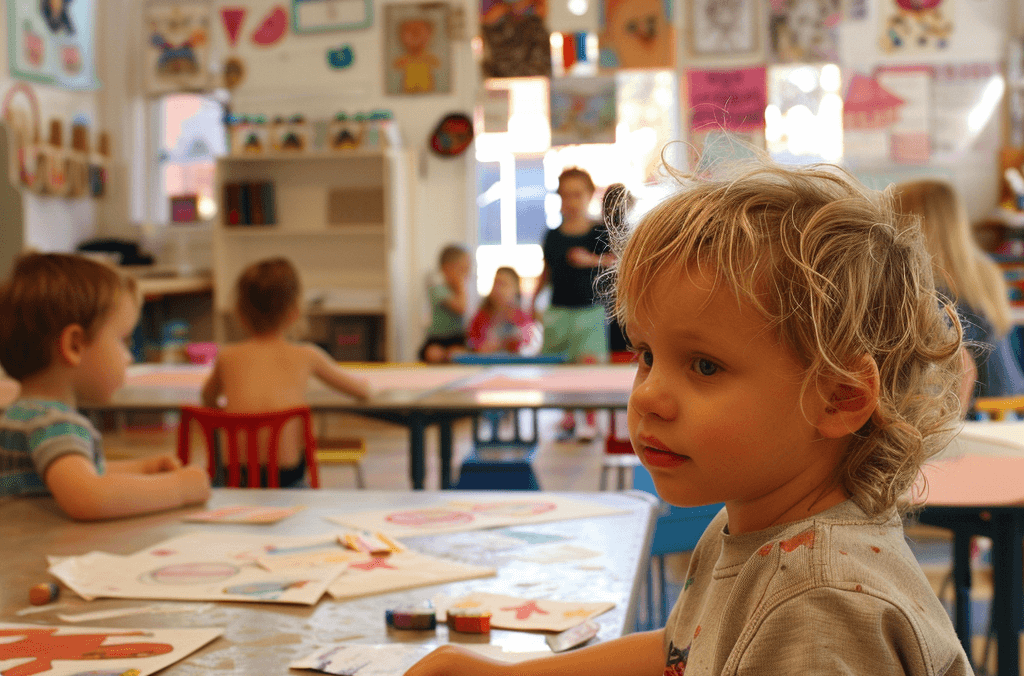
In the realm of early childhood education, the Reggio Emilia Approach stands out as a beacon of innovation and creativity. Originating from the small Italian town of Reggio Emilia, this educational philosophy has gained worldwide acclaim for its unique focus on child-driven, project-based learning. By emphasizing creativity and individual expression, the Reggio Emilia Approach offers a compelling alternative to traditional education methods, fostering a nurturing environment where young minds can flourish.
The Core Principles of the Reggio Emilia Approach
At the heart of the Reggio Emilia Approach are several key principles that collectively define its essence and guide its practices. These include:
-
Child-Centered Learning: Children are viewed as competent, curious, and capable of constructing their own learning experiences. Teachers and educators act as facilitators rather than instructors, enabling children to explore their interests at their own pace.
-
The Environment as the Third Teacher: The physical environment plays a crucial role in the Reggio Emilia Approach. Classrooms are thoughtfully designed to be aesthetically pleasing and intellectually stimulating, encouraging exploration and discovery.
-
Project-Based Learning: Rather than following a predetermined curriculum, learning is emergent and evolves through projects that are driven by the children’s interests. These projects can span days, weeks, or even months, providing a deep dive into specific subjects.
-
Documentation: Learning experiences are meticulously documented through photographs, videos, and children’s own words and artworks. This not only tracks progress but also allows children to reflect on their learning journey.
-
Community and Parental Involvement: The approach advocates for a strong partnership between schools, families, and the wider community. Parents are encouraged to actively participate in their child’s education, blurring the lines between home and school learning environments.
Fostering Creativity Through Project-Based Learning
The Reggio Emilia Approach’s emphasis on project-based learning is particularly effective in nurturing creativity. By allowing children to pursue projects that resonate with their own interests and curiosities, they become more engaged and invested in their learning. This intrinsic motivation is a powerful driver for creative thinking and problem-solving.
Projects in a Reggio Emilia-inspired setting are diverse and multifaceted, integrating various subjects and disciplines. For example, a project on bridges can encompass aspects of physics (understanding forces and structures), art (designing and constructing models), history (exploring famous bridges and their stories), and literacy (documenting the project through writing and drawing).
The Role of Teachers and Educators
In the Reggio Emilia Approach, teachers play a vital role in facilitating children’s learning experiences. They are observers, listening intently to children’s questions and ideas, and provocateurs, posing questions that challenge and extend thinking. Teachers also collaborate with children, co-constructing knowledge and meaning through shared experiences.
Moreover, educators in the Reggio Emilia framework are lifelong learners themselves, constantly reflecting on their practice and engaging in professional development to better support the children in their care.
Creating a Supportive Environment with BubbleBud Kids
Integrating the Reggio Emilia Approach with modern educational technology can further enhance its impact. BubbleBud Kids offers a suite of tools and resources that align with the principles of Reggio Emilia, from interactive games that stimulate creativity to a Learning Management System (LMS) that facilitates project-based learning and documentation.
With BubbleBud Kids, educators can create a vibrant, interactive learning environment that supports the Reggio Emilia Approach’s emphasis on child-driven exploration and creativity. The platform’s tools for documentation and communication also make it easier for teachers and parents to collaborate and share in the children’s learning journey.
Conclusion: A Pathway to Creative Discovery
The Reggio Emilia Approach offers a fresh perspective on early childhood education, one that values the creative potential of every child. By prioritizing child-driven projects, a supportive environment, and strong community ties, it lays the foundation for a lifelong love of learning.
For educators and parents looking to embrace this innovative approach, integrating technology like BubbleBud Kids can provide valuable support, making it easier to document, communicate, and extend learning beyond the classroom walls.
As we look to the future, the Reggio Emilia Approach, coupled with supportive educational technology, holds the promise of nurturing a generation of creative thinkers and problem solvers, ready to tackle the challenges of tomorrow.
Explore the world of Reggio Emilia with BubbleBud Kids and unlock the creative potential of your children or students today. Visit our website to learn more about how our tools and resources can support your journey toward a more engaging, child-centered learning experience.
